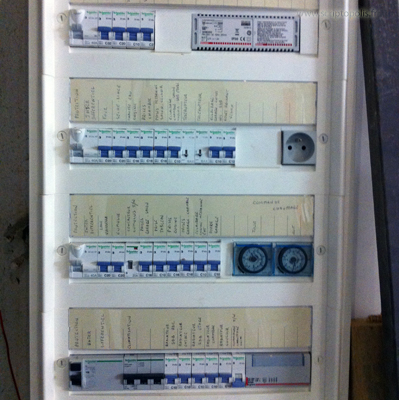Ready-to-hand

Toulouse, april 2011.
In everyday life, nothing seems easier than pushing a button to turn on the light, start a computer, or run a washing machine program. It is so simple, as is a double-click, that one acts naturally without thinking about it. These kind of things becomes a matter of concern only when they become inoperable, or simply do not work anymore. When electricity breaks down, the world suddenly comes to a stop. What was a seamless and fluid technology progressively emerges as a particular and situated problem that deserves an inquiry to be solved: why did this plug stopped working? What will be enough to reset the circuit breaker? Which hardwire should be tracked in order to find the short circuit? How do we know which fuses have blown? Will the names inscribed on the electric panel really match with apartment rooms? In other words, what was ready-to-hand may become a complicated issue that eventually gives one an headache. Such an inquiry gradually surfaces the wide and complex infrastructure through which electricity circulates. During such a long process, one discovers some of the various components that compose the hidden electric network, and understands how much it is important to carefully label the location of each fuse stored in the electric panel.






